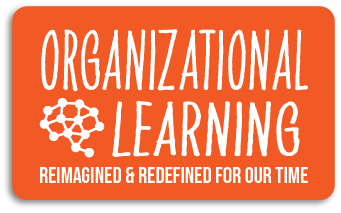
Why the connections between people are vital for knowledge sharing
Dr Nigel Paine continues his Organizational Learning Reimagined and Redefined webinar series. In this webinar, Paine is joined by WD-40's Garry Ridge to discuss the importance of the organizational brain - the connections that enable people to share knowledge, learn and make sense of the world.
How do you tap into your organizational brain? That was a central theme in Nigel Paine’s recent webinar, Building out the organizational brain. Joining Paine to talk about organizational learning, values, culture and leadership, was Garry Ridge, former CEO of WD-40 Company and now a culture coach, keynote speaker and founder of The Learning Moment.
But first, what is the organizational brain? Organizations contain a huge amount of knowledge. Most store that knowledge, holding it close. This is a major failing, because organizations are like the human brain – they thrive on connections. The human brain has between 80 and 100 billion neurons, with up to 1000 connections between each neuron, called synapses. These connections pass messages around the brain and they are vitally important, enabling us humans to make sense of the world.
In organizations, connections between people are vitally important, enabling knowledge to be shared. It is how knowledge is shared, made sense of, amplified and built upon and it’s what makes an organization a learning organization. But only when those connections exist and information is allowed to flow freely and expertise is widely shared. “If you can strengthen the community in an organization, if you can share knowledge, then organizations begin to know what they know,” said Paine. This is tapping into the organizational brain.
It's how Ridge approached leadership when he was CEO at WD-40 and judging by the numbers shared in the webinar (93% of staff are engaged, 97% know what results are expected of them, 97% are clear on organizational goals, 99% love to tell people they work for WD-40 and 96% respect their coach/manager), it’s an approach that has worked very well for him and his teams. Many employees leaving WD-40 to work somewhere else post messages on Glassdoor saying it was the best place they had ever worked.
In the webinar, Paine shared this comment by Ridge: “I believe that if we dedicate ourselves to bringing out the best in others, we will bring out the best in ourselves. This is because we are connected in organizations, and we work best when we protect and feed each other. If you feel empowered to share what you know and communicate that learning and insight to a group of people around the organization, the organization gets stronger and more resilient, and you strengthen that sense of community. Improved performance inevitably follows.”
Ridge believes that a successful organization is one where people are happy, where they are encouraged to be the best version of themselves, where they have responsibility and accountability and where they don’t feel the need to fake or hide because they don’t fear failure.
Failure is not a word that Ridge likes. He talks about learning moments, when there are positive or negative outcomes of a situation that need to be shared openly and freely with others in an organization. He likes to ask people “What did you learn today?” and he likes to share those learnings so that everyone can benefit from other people’s insights. And so that the organization as a whole learns.
For his upcoming book, Paine has created 7 principles for organizational learning, and he shared them in the webinar. This is principle 6: When learning is locked in people’s heads, it’s very hard for organizations to make real progress. When learning is out there, accessible to all, the organization can transform itself on a regular basis.
In today’s world of uncertainty and change, organizations are forced to think again on a regular basis. But how can they realistically do that when learning and insights are locked away deliberately? When employees are not encouraged to share knowledge, to learn from and with each other? When it’s all about the individual, rather than the collective?
“You need to draw on the brains of the whole organization to draw on the organizational brain,” said Paine. “The foundations of resilience and agility should be based on working with others, not simply on looking after yourself. And we shouldn’t be running organizations based on the assumption that a handful of people make all the decisions and everyone else runs around after them doing what they’re told and parking their brain at the reception desk when they walk in in the morning.”
At WD-40, managers aren’t called managers, they’re called coaches. And Ridge thinks people have a lot to learn from (good) football coaches. “Let’s think about the attributes of a great coach. Number one: they never run on the field and play the game. Number two: they know what it takes to watch. Number three: they know the rules of the game. Number four: they spend a lot of time on the side lines observing the play. And number five: they spend a lot of time in the locker room after the game listening to the players.”
It is what Paine calls fieldwork – talking to people in the organization, hearing about their challenges, insights and ideas, listening, observing, letting ideas surface and so on. Leaders have a lot to learn from the people working at the sharp end, close to the customer. However, to extract those insights means not just asking great but listening closely to the answers. If you encourage information to flow those connections willflourish.
Next in Paine’s The Organizational Learning Reimagined and Redesigned series is Embracing External Insights To Drive Change on March 7 2024, followed by Adopting Healthy Habits: How To Fail In Order To Learn And How To Ask For Help. To sign up, visit here.
Access the webinar recording and slides here.


